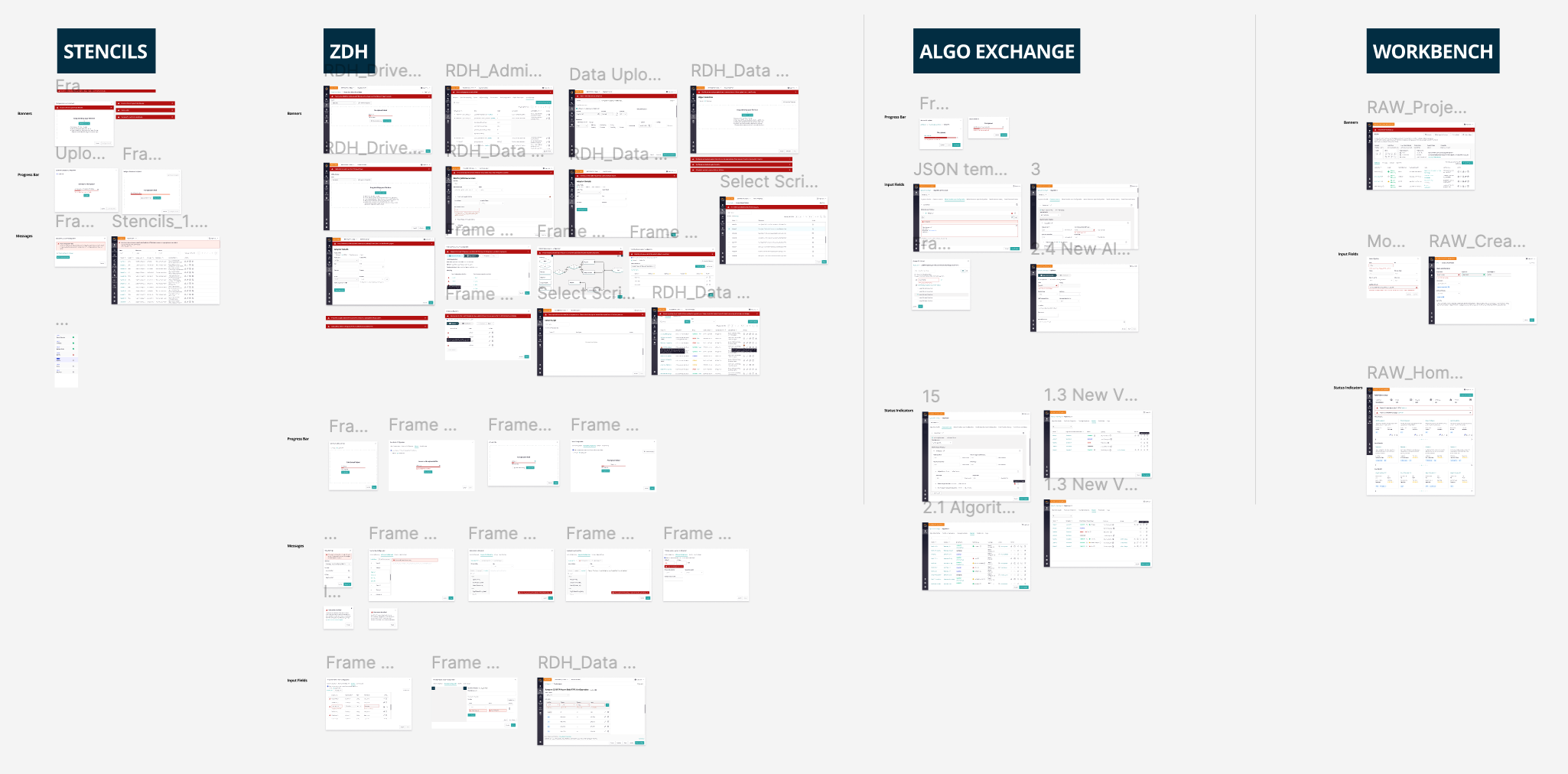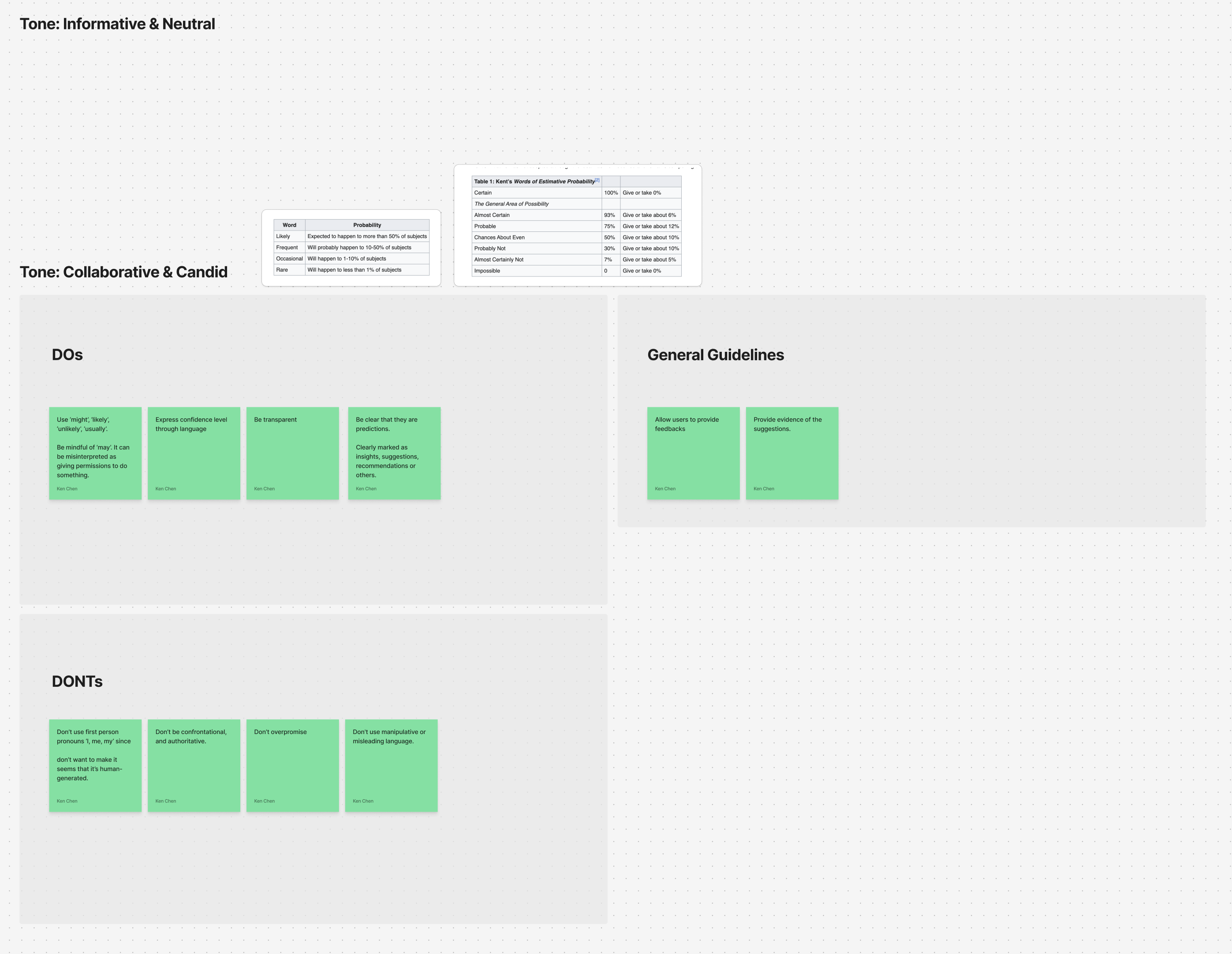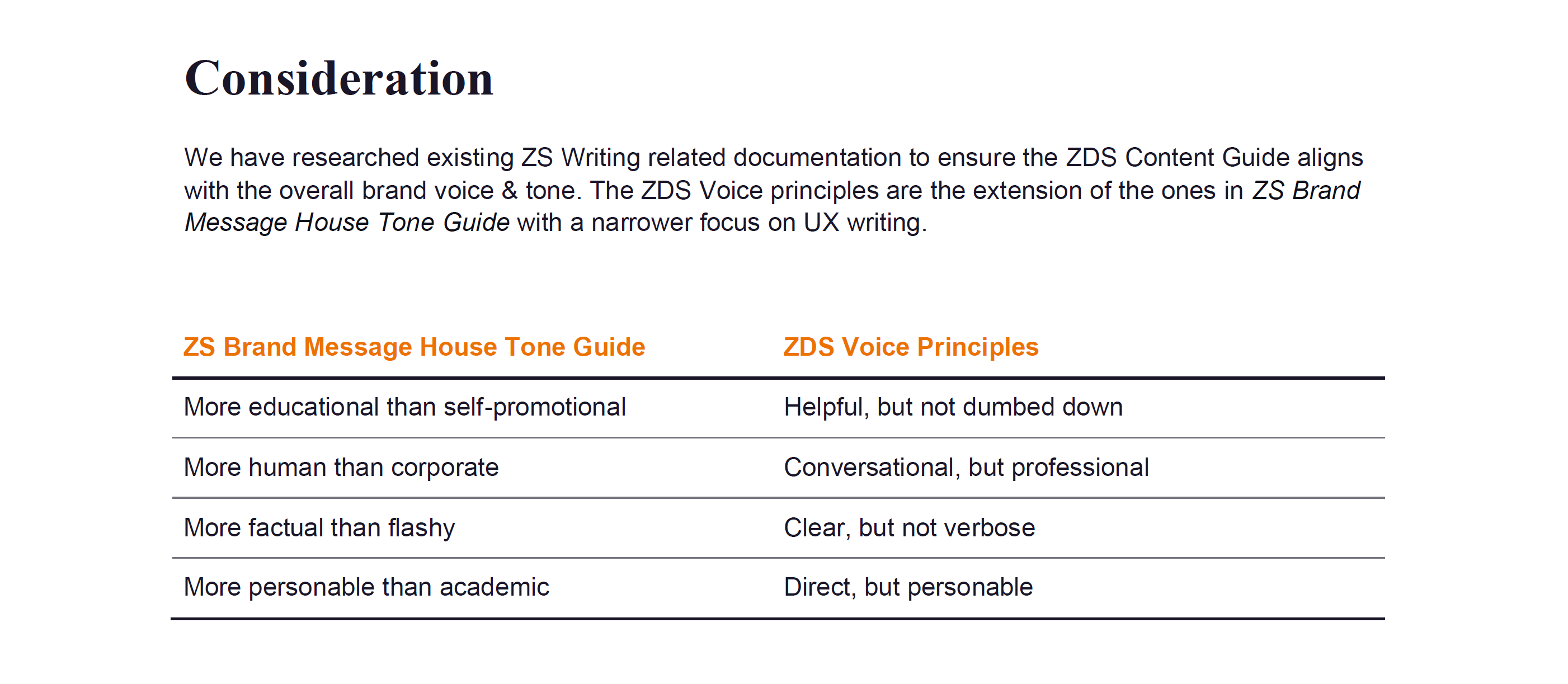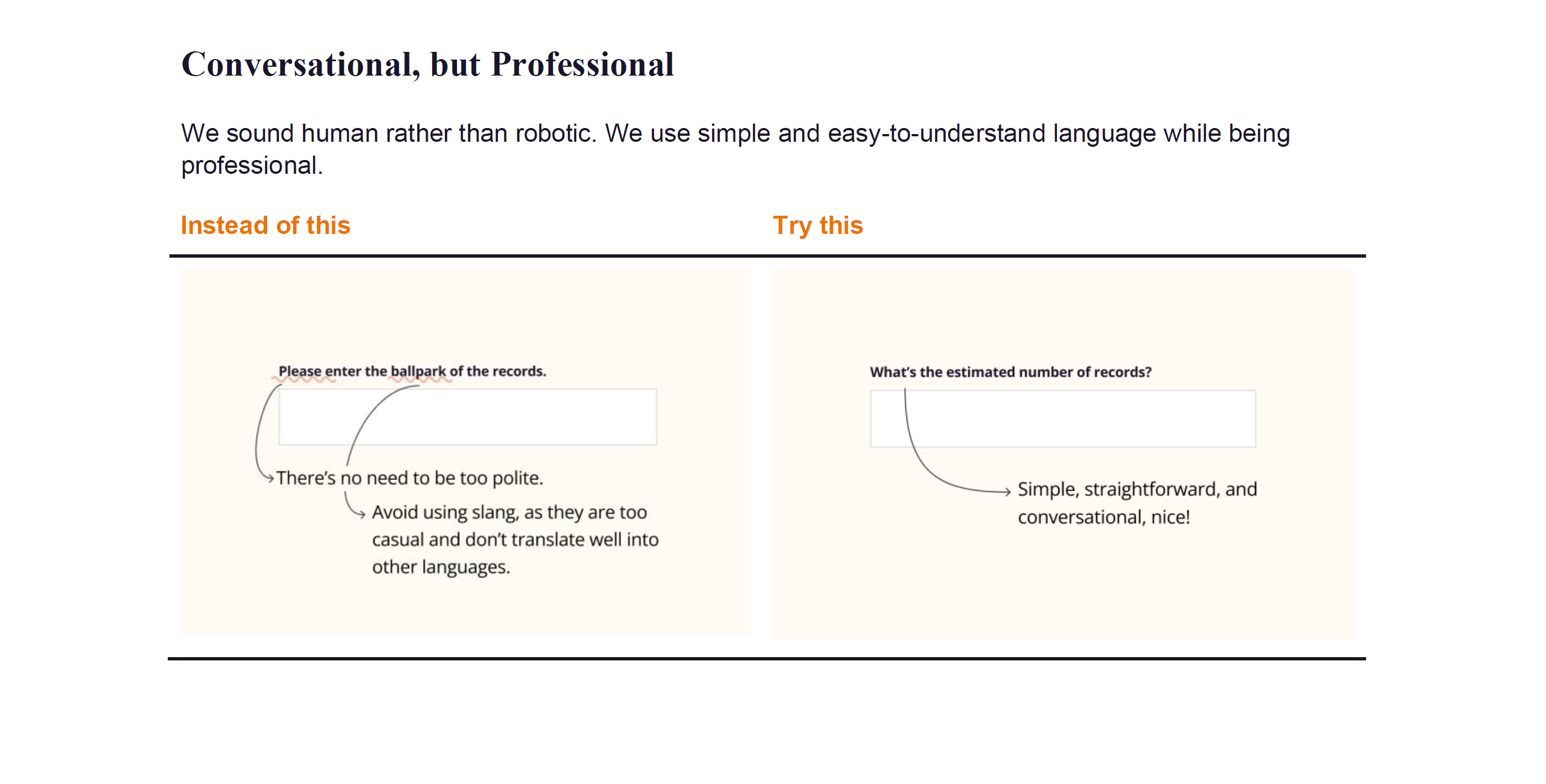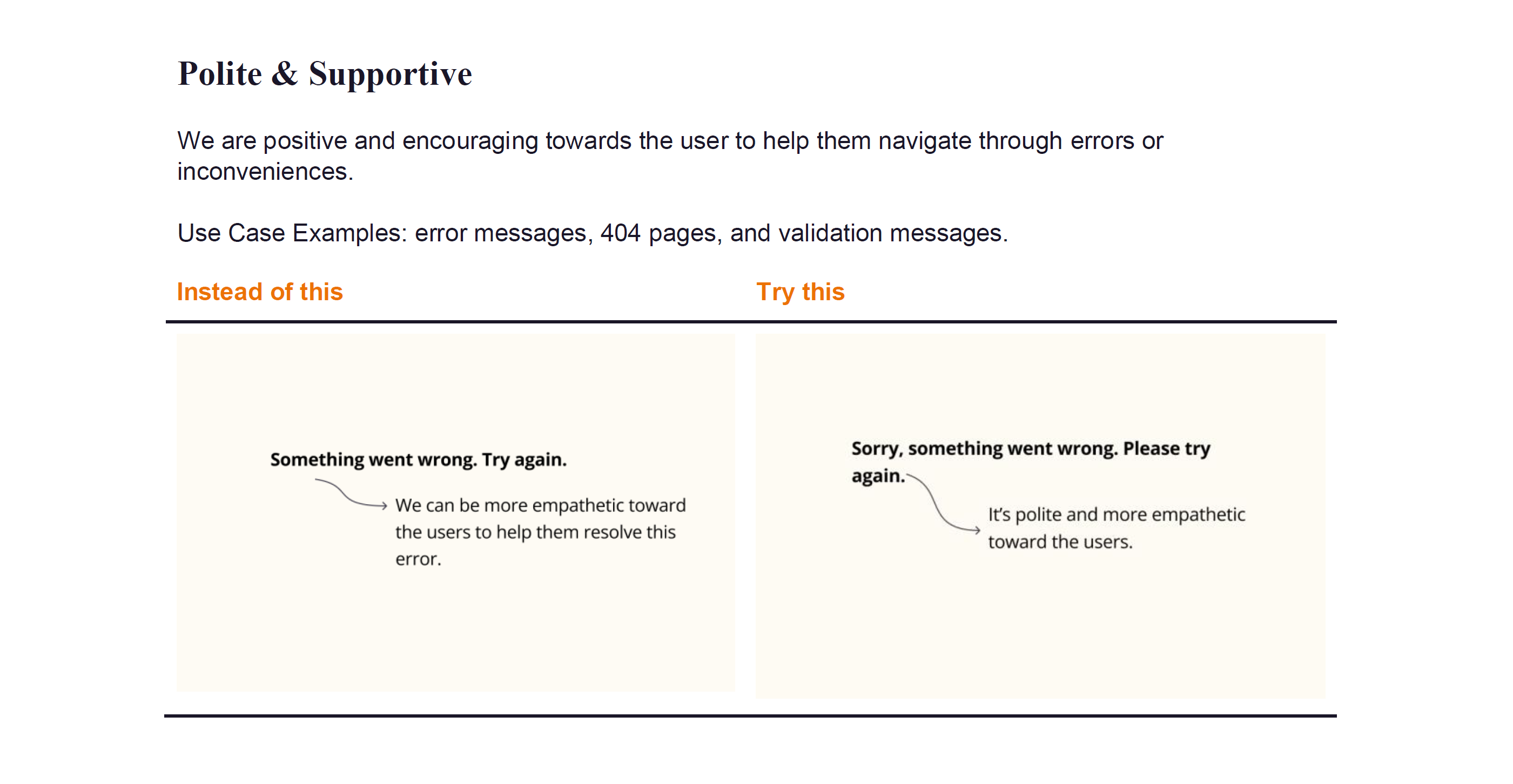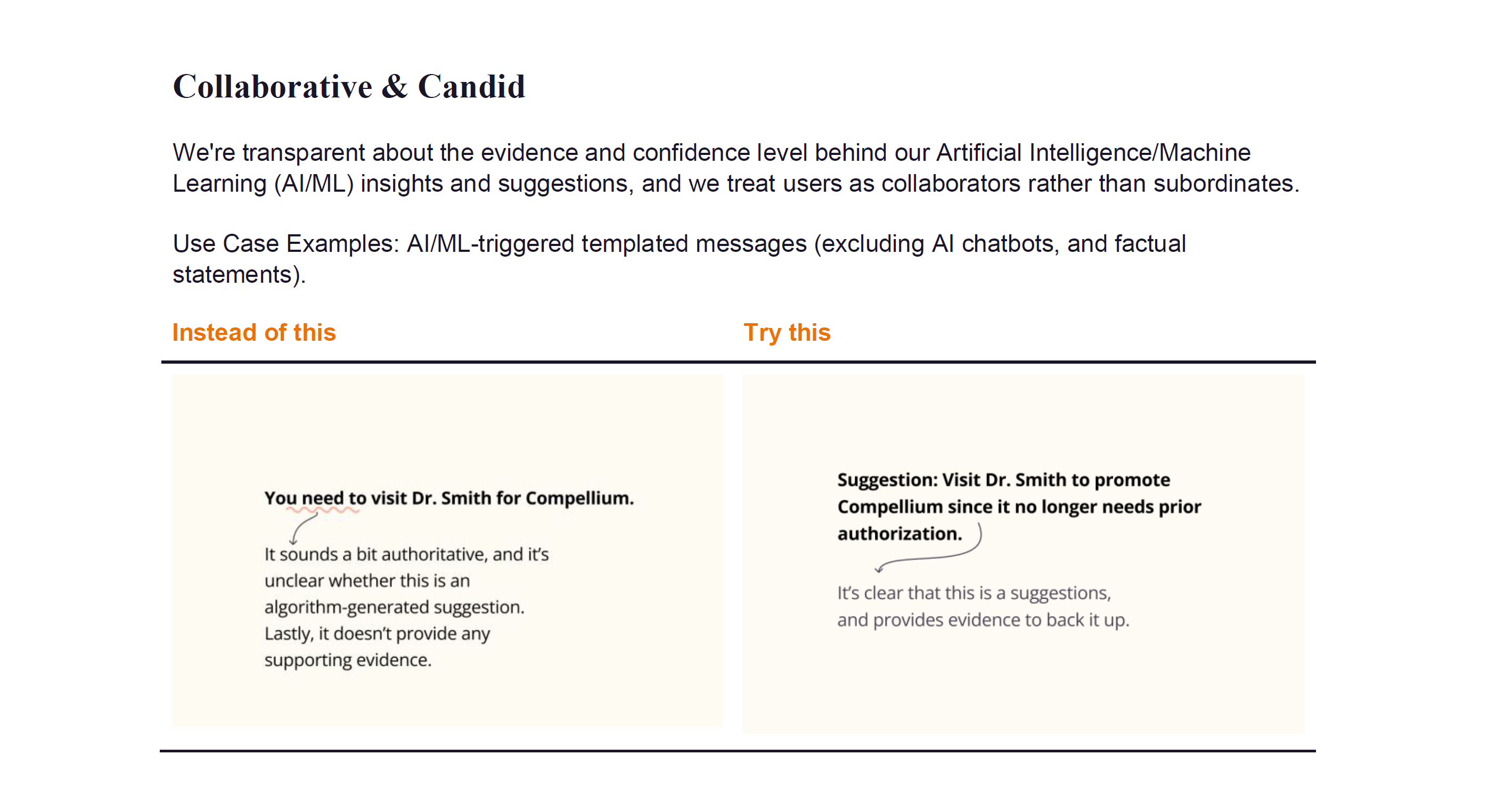Voice & Tone Guideline
Voice & Tone Guideline transforms scattered UI copy and emerging AI interactions into a unified writing system embedded within the design system. I initiated and led the effort, auditing eight products, aligning with cross-functional teams, and creating a scalable standard that improved clarity, consistency, and collaboration across design and content.The guideline reduced cross-team friction, strengthened brand voice, and empowered teams to write with greater confidence and alignment.
Snapshot
| Role | Initiated and drove the project end-to-end: set the vision, defined a unified cross-product framework, partnered with Marketing, Content, and AI stakeholders, and supported multiple teams through adoption. |
|---|---|
| Leadership scope | Voice & tone guidance across UI copy and emerging AI interactions, embedded in the design system. |
| Challenge | Copy came from multiple squads & functions → inconsistent tone, re-work by Content team, and brand dilution during an active rebrand |
| Deliverable | Deliver a unified, actionable guideline that covers both UI copy and emerging AI interactions, ensuring alignment with existing brand and writing standards. |
| Status | Version 1.0 resides in the design system, has been adopted by all design teams, and is governed by the design system team. The continuing roadmap includes developing reusable writing patterns for common product scenarios. |
| Impact to date | Integrated into the core design system, adopted by all design teams. Launched weekly office hours to answer questions and support adoption. |
0. Context
Writing never came naturally to me. As a non-native English speaker, I often found myself over-editing simple UI messages and second-guessing tone. Over time, I realized this friction wasn’t unique. Across teams, designers, PMs, and engineers were all writing copy without a shared standard, which led to inconsistent tone, extra rework for the Content team, and diluted messaging. I saw an opportunity to transform a personal challenge into a cross-functional asset by creating a unified voice and tone framework that would enable everyone to write with greater clarity and confidence.
1. Business & Stakes
The inconsistent tone was confusing users and risked weakening the cohesive brand image we were working to establish. To address this, I pitched a lightweight Voice & Tone playbook to the design system lead, positioning it as a force multiplier for both the rebrand and the upcoming self-serve AI features.
2. Problems & Goals
| Pain-point (❌) | Goal (✅) |
|---|---|
| Each product design team ships a copy of itself | Single source of truth in the design system |
| PMs/engineers fill gaps → awkward phrasing | Clear principles with examples that anyone can follow and apply when writing UX messages. |
| AI chat flows needed a thoughtfully crafted tone to build trust. | Defined a distinct tone of voice for AI interactions to foster user trust and align with the product’s overall experience. |
| The content team worried about ownership | Shared governance model with Content as co-owner |
3. Strategy & Process
3.1 Initiation & Resource Win
The inconsistent tone was confusing users and risked weakening the cohesive brand image we were working to establish. To address this, I pitched a lightweight Voice & Tone playbook to the design system lead, positioning it as a force multiplier for both the rebrand and the upcoming self-serve AI features.
3.2 Audit & Core Principles
- Ran a content audit across eight products, ~240 screens.
- Developed a rough road map of how this document will evolve and expand.
- Distilled the main principles using a "_____ but _____" format, and researched existing content and brand guidelines to ensure alignment with the company’s overall voice and communication style.
4. Expanding Scope and Navigating Conflict
4.1 AI Tone Challenge
While working on the guideline, I joined a new initiative focused on integrating AI into the product. A key challenge was designing a voice that feels trustworthy, clearly distinguishes AI-generated suggestions from human input, and helps users maintain confidence even when the AI makes mistakes.
4.2 Conflict → Collaboration
Connected with the help center content team, marketing team, and brand team to align on voice and tone and gather feedback. Their input helped ensure that the principles I outlined flowed clearly from the brand level to the product level, thereby strengthening consistency across all touchpoints.
I looped in the UX writing team from a newly acquired company to get their input, even though their product wasn’t directly tied to ours. Initially, they were hesitant, unsure of their role and ownership. After aligning with design leadership and clarifying that they would remain an independent team, I offered to keep them closely consulted. This helped build trust, and they shared helpful feedback on structure and tone, including the idea to keep this doc high-level as a foundation for future work.
5 Outcomes & wins
5.1 Living Document & Roll-out
- Published v 1.0 on SharePoint, including before/after snippets.
- Presented the guideline in lead-level meetings and team-wide town halls, led two lunch-and-learns, and opened bi-weekly office hours.
- Solicited feedback from those meetings and documented the insights to refine the roadmap and clearly define next steps.
5.2 Impacts & Results
| Result | Evidence |
|---|---|
| Org asset shipped | Guideline lives in the design system; link embedded in the Figma library |
| AI flows consistently | All released AI chat dialogs follow the Voice Split Chart for tone and persona. Preset messages and templates have been tailored to align with those principles, while LLM responses are still being tested for tone consistency. |
| Continuous evolution loop | Office hours + version log keep doc alive without extra PM support |
6. Reflection & Next Steps
What worked:
Start small (audit + principles) → iterate; co-ownership dissolved resistance.
Following launch tasks (when restarted):
- Build a writing pattern library with commonly used UI copy (e.g., unsaved work warnings, delete confirmations, input validation messages) to drive consistency and save time.
- Test whether a fine-tuned LLM could help designers brainstorm copy faster and stay aligned with content principles.
- Create a product content audit to measure how well different products align with writing guidelines and offer targeted improvement suggestions.

